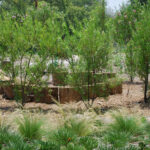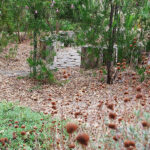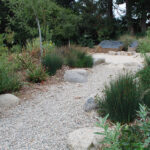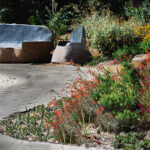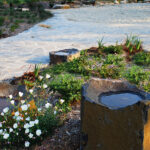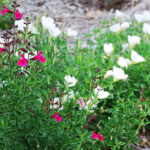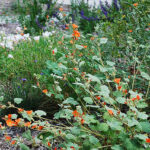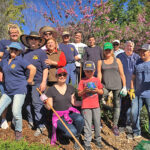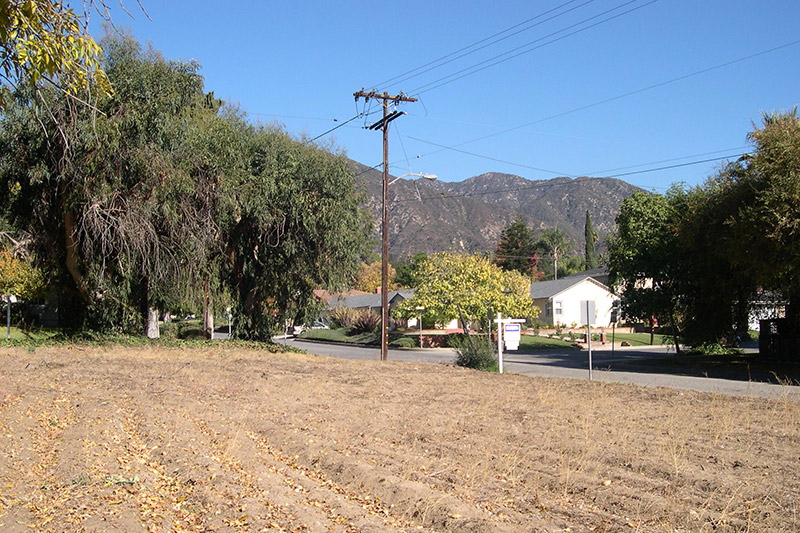Milton & Harriet Goldberg Recreation Area
Sierra Madre, CA
Creating small neighborhood parks that are accessible for people to reach on foot is a goal that every city should have. They promote the health and well-being of their users and help our planet mitigate climate change. This park was designed to become a neighborhood gathering space, a natural play area for children, and to maximize carbon sequestration. Sustainability was achieved by using primarily locally sourced and recycled materials, porous pavements, and having 85% of the total area heavily planted with native vegetation to reduce the need for irrigation, support wildlife habitat, and sequester carbon. Sustainability is further reached with its low maintenance strategy. Plant maintenance is only needed once or twice a year when a group of local Rotary Club volunteers, led by a landscape architect, removes invasive weeds, prunes dead wood, and spreads recycled bark mulch to help cool the soil and retain moisture.
Creating small neighborhood parks that are accessible for people to reach on foot is a goal that every city should have. They promote the health and well-being of their users and help our planet mitigate climate change. This park was designed to become a neighborhood gathering space, a natural play area for children, and to maximize carbon sequestration. Sustainability was achieved by using primarily locally sourced and recycled materials, porous pavements, and having 85% of the total area heavily planted with native vegetation to reduce the need for irrigation, support wildlife habitat, and sequester carbon. Sustainability is further reached with its low maintenance strategy. Plant maintenance is only needed once or twice a year when a group of local Rotary Club volunteers, led by a landscape architect, removes invasive weeds, prunes dead wood, and spreads recycled bark mulch to help cool the soil and retain moisture.
Two contrasting spaces on opposite ends of the park were created. The south side is planted with coast live oaks providing a shady garden with leathery leaf native plants. Paving is a local flagstone and decomposed granite. Basalt stone formations are placed in key areas to catch rainwater and attract wildlife. A deep layer of sand on the low end of the site recharges most of the site’s storm water and doubles as a sand play area for children. Carved granite boulders form seating along with boulders set along the edge of the sand and in a dry streambed. The north side of the park in total contrast is sunny with soft grasses and delicate plants. In the center of this area is a circle of desert willows trained to form a half domed Indian hut. Inside this circle are recycled eucalyptus wood stumps from removed invasive trees, used for seating and paving. Three paths connect the north and south gardens, one with fragrant native plants, one with a variety of yearlong flowering plants and the last with wildflowers. The docent guide will provide more detail about how the park was created.
Milton & Harriet Goldberg Recreation Area (Before)
Milton & Harriet Goldberg Recreation Area (Before)
Two contrasting spaces on opposite ends of the park were created. The south side is planted with coast live oaks providing a shady garden with leathery leaf native plants. Paving is a local flagstone and decomposed granite. Basalt stone formations are placed in key areas to catch rainwater and attract wildlife. A deep layer of sand on the low end of the site recharges most of the site’s storm water and doubles as a sand play area for children. Carved granite boulders form seating along with boulders set along the edge of the sand and in a dry streambed. The north side of the park in total contrast is sunny with soft grasses and delicate plants. In the center of this area is a circle of desert willows trained to form a half domed Indian hut. Inside this circle are recycled eucalyptus wood stumps from removed invasive trees, used for seating and paving. Three paths connect the north and south gardens, one with fragrant native plants, one with a variety of yearlong flowering plants and the last with wildflowers. The docent guide will provide more detail about how the park was created.
